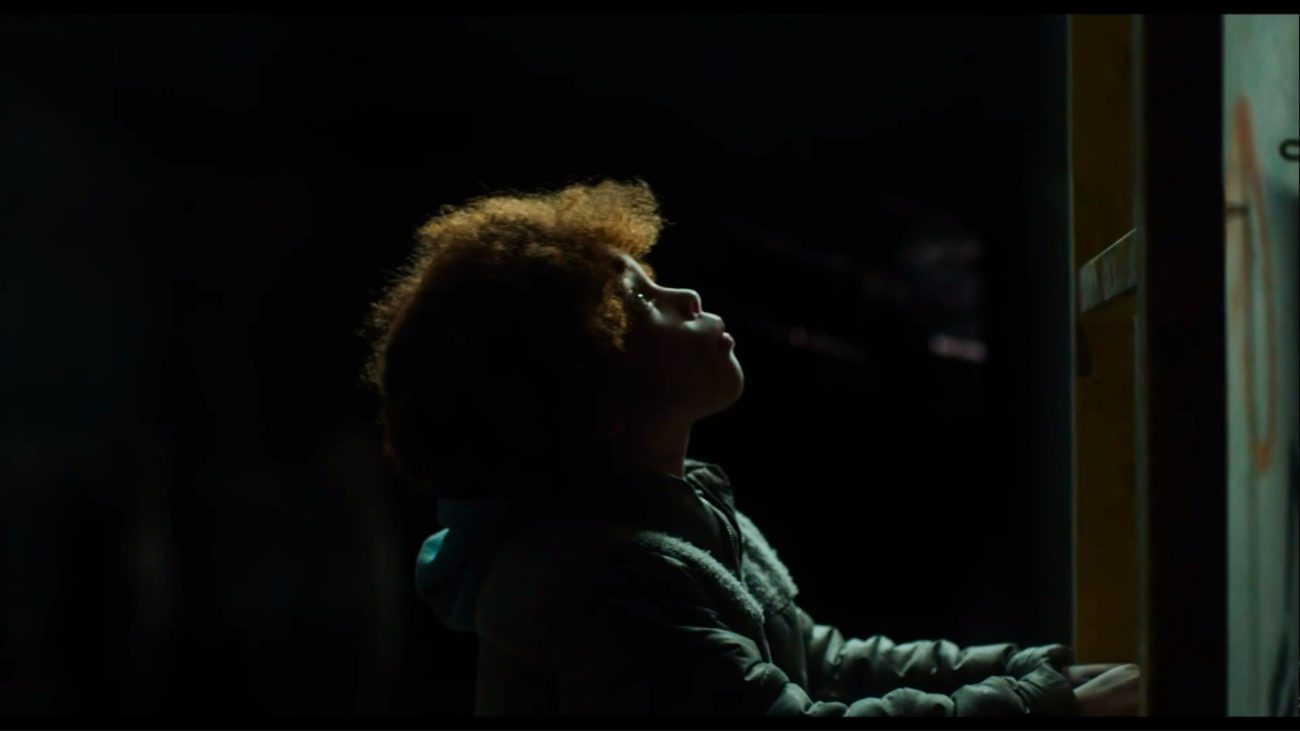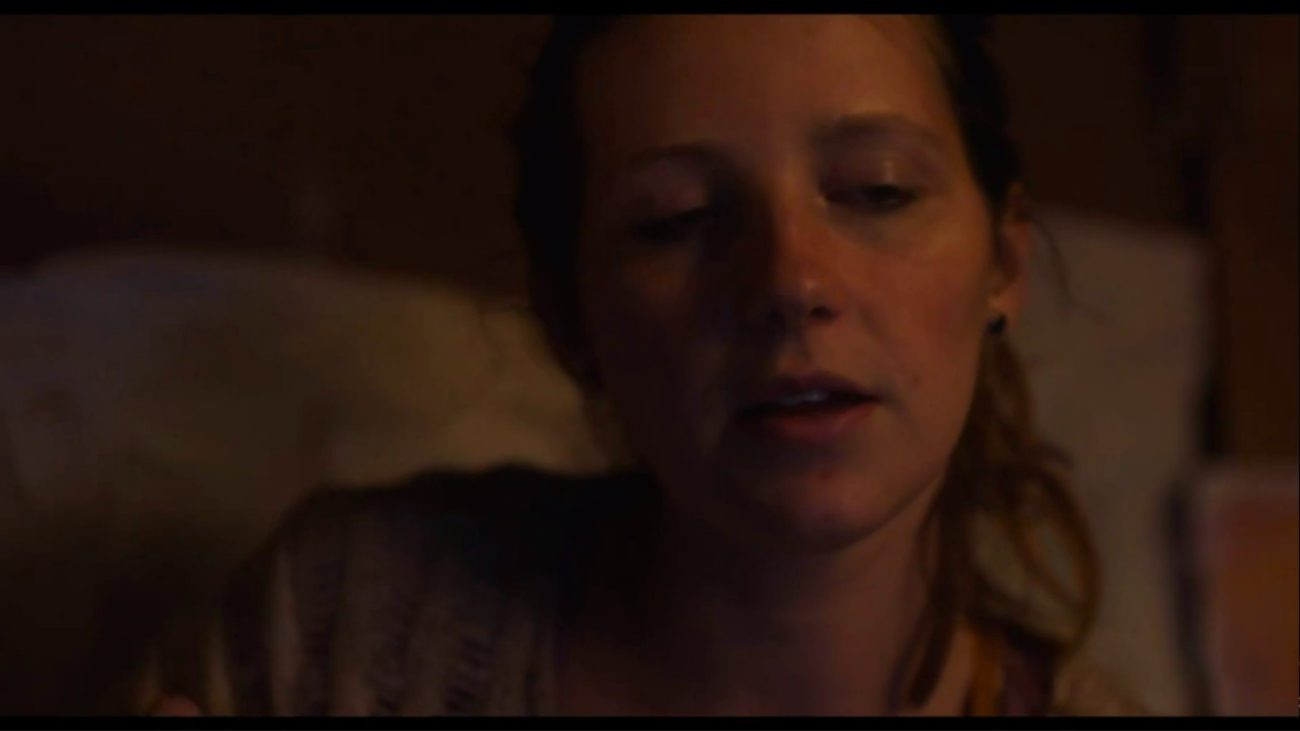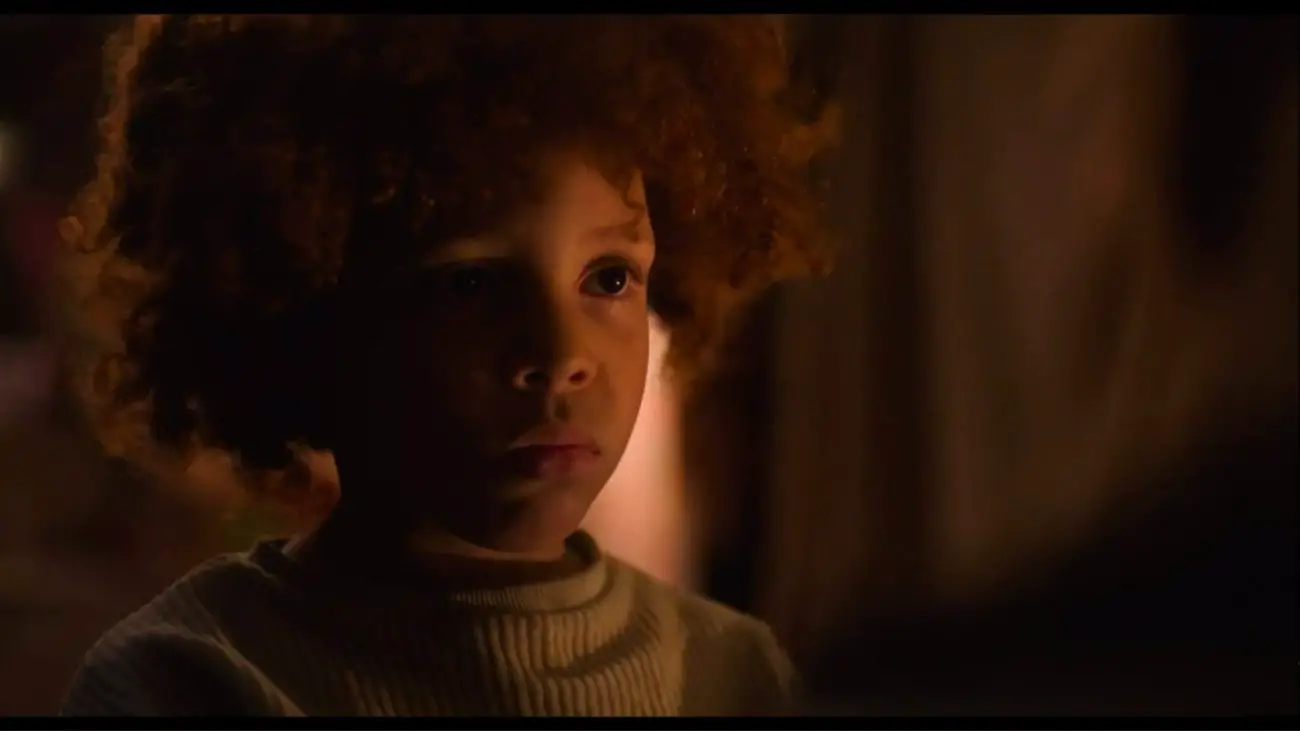Topside, an intimate drama that opens this weekend theatrically after an earlier festival run, opens with a quote from the 1993 book The Mole People by Jennifer Toth. Toth’s is a book I had read (and even often taught) back in the day, a gripping, sharply told nonfiction tale of the underground communities living hardscrabble lives in New York City’s abandoned subway tunnels. Toth’s informant, J.C., tells her, without irony, “we have adults as young as five.”
Like The Mole People, Topside, a new film co-written and co-directed by Logan George and Celine Held, provides a close, fraught study of homelessness and its perils, focusing on its young protagonist, five-year-old Little (Zhaila Farmer), as she navigates from her underground home “topside”—where the rest of society lives.

The film’s first 15 minutes are a tour-de-force of verité filmmaking. There’s nearly no dialogue, and what words can be heard are often offscreen, muted, or overlapping. The sound design eschews nondiegetic music for a slow steady drone of distant subway cars and a mysteriously unseen throbbing, pulsing bleat that commands attention. The handheld camerawork hews closely and unsteadily to Little, her frizzy hair and bright eyes only occasionally illuminated by the slim slivers of light filtering through from above. Light and sound are threats and darkness a comfort in the underground world she roams freely.
Her parents—mom Nikki (played by co-writer/director Held) and biodad John (the hip-hop star Fatlip)—are both junkies whose care for Little wavers. She can’t learn a traditional curriculum underground, John argues, in a scene that seems to exist primarily for expository necessity, and would be better off “topside,” where her peers live, but that would require both sacrifice and a dangerous venture to the surface world they distrust.

Topside’s plot forces the issue soon enough, and the dark quietude of the underground gives way to a topside that is loud, colorful, hectic, and rife with the dangers of authority. Forced into a world neither really knows how to navigate, both Little and her mother Nikki subject themselves to the care of her downtown dealer-pimp Les (Jared Abrahamson). It’s less a solution than flame on a fire.
Over the past year for Film Obsessive, I’ve written a number of pieces on new films and series that prioritize the plight of young women like the at-risk protagonists of Maid, Holler, Settlers, and even the documentary Jacinta. Films that present the lived experience of young women at risk without melodrama or cliché are rare, as are ones that refuse to trivialize their experience with juvenile humor. Like each of those, Topside treats the challenge of young motherhood respectfully, even as Held’s Nikki is less than perfectly up to the task.
Held’s performance as a homeless mom who loves, but cannot adequately care for, her child, is touching, even if the film’s conceit offers no backstory for her homelessness or addiction. The supporting cast, including Fatlip, is good too, if barely onscreen long enough to register. The film belongs, really, to Held and especially young Farmer, who is a delight as Little, a girl who speaks volumes, not with words but with inquisitive eyes and soulful stares. Hers is a performance reviewers may well recall someday as the spark of a great career.

In 1993, Toth’s book—subtitled Life in the Tunnels Beneath New York City—reported that the NYC subway tunnels housed thousands of homeless people. Most of them men, many of them educated, none of them disfigured or monstrous, as the lore had it, but among them “adults” as young as five-year-old Little. Toth’s account, a richly described narrative short on factual detail, had its skeptics who were unable to verify individuals, locations, or estimates, but it was nonetheless a bestselling and persuasive document of a subculture starkly at odds with what they knew of life “topside.”
Topside’s tack is different. It fictionalizes one small snippet of the world depicted in The Mole People and creates a character that could inhabit that world. It’s not subject, then, to the same qualms about its veracity that Toth’s book was (and that would presage later debates about truthfulness in narrative-nonfictions-proved-fictional like A Million Little Pieces and Love and Consequences).
Yet at the same time, Topside does raise ethical concerns. Nearly every film made about people living in extreme poverty has to answer for itself if it dramatizes their situation for profit. “Poverty porn” is a thing, and as J. D. Vance’s book and the subsequent adaptation Hillbilly Elegy prove, some work depicting the disenfranchised poor seems to exist only for the purpose of benefiting its maker.
But not so the case with Topside (or Jacinta, Holler, Settlers, or Maid, for that matter). The film may well use the editing techniques of the urban thriller genre and the cinematography associated with neorealism to tell its story, but its doing so does not equate to pandering or manipulation. The film creates a convincing world and establishes threats to characters we’re intended to care about. Lowell A. Meyer’s cinematography is especially effective in rendering the underground world of the film’s first act, then employs the same lo-fi aesthetic as the narrative progresses topside to something brighter and more hectic.
The result is not an easy watch, but Topside tells a story anyone with compassion or empathy—traits too often in short supply today—can appreciate. It’s not a film that will please those hoping for a seat-of-the-pants thrillride, a bravura star turn, or a rousing against-the-odds victory, but it offers a one-of-a-kind study of homelessness that neither panders nor romanticizes.
Topside opens theatrically and on demand March 25.




Well done, J Paul!